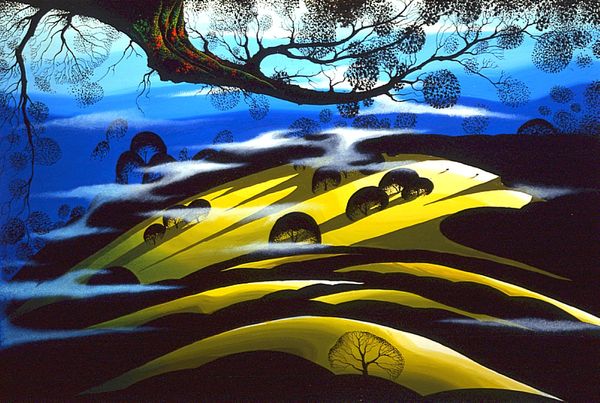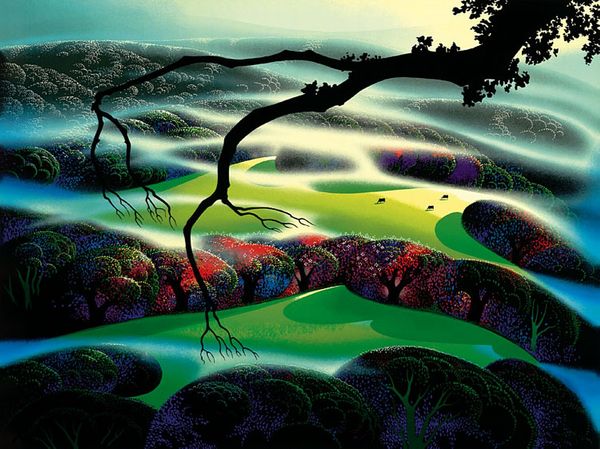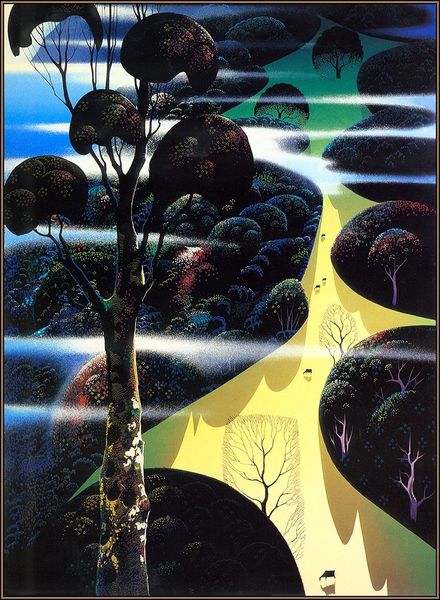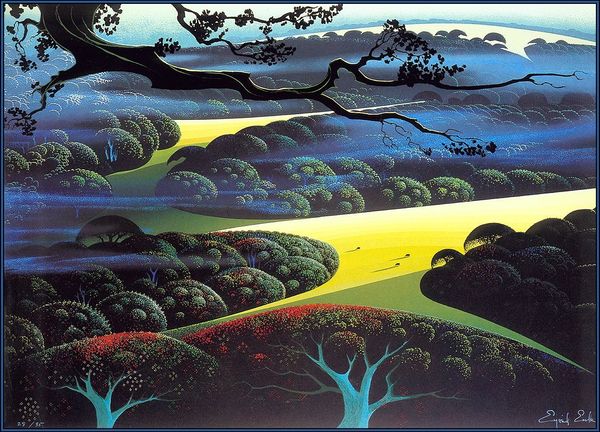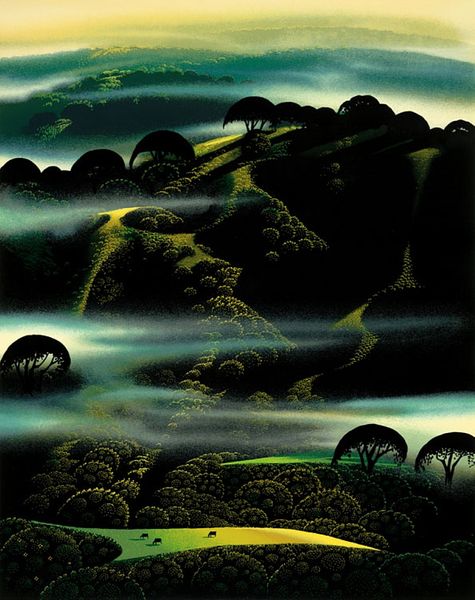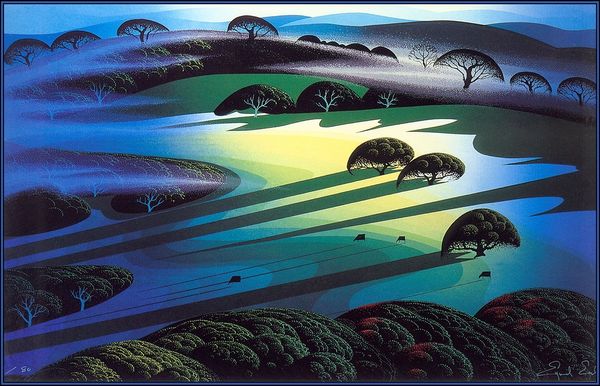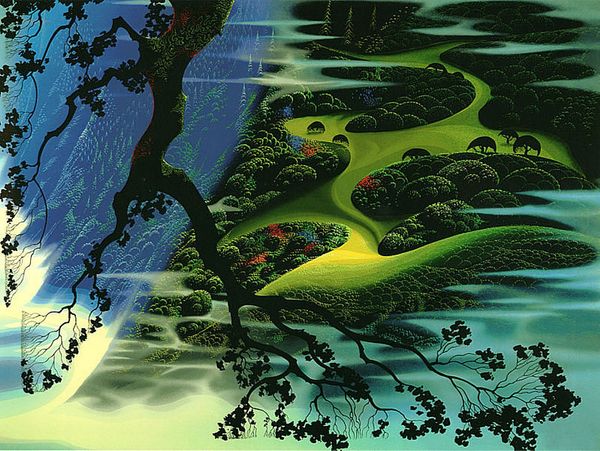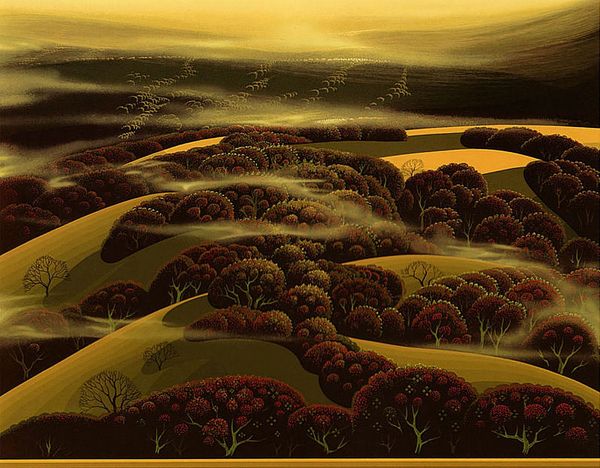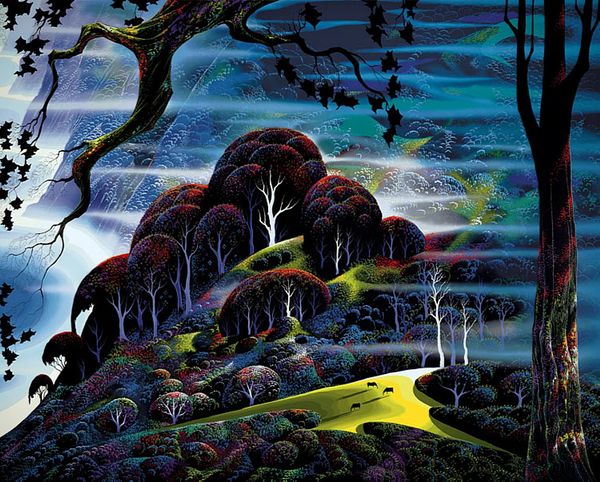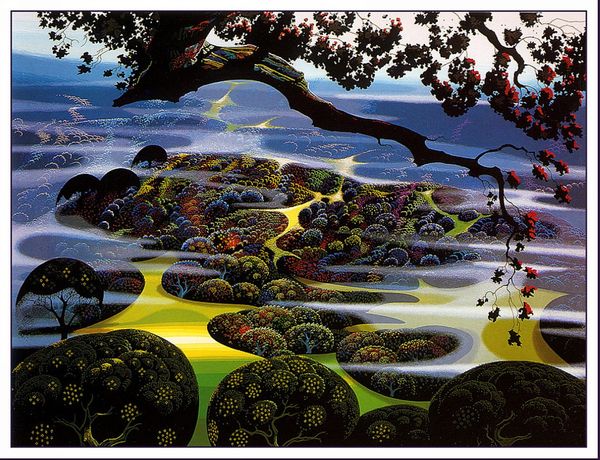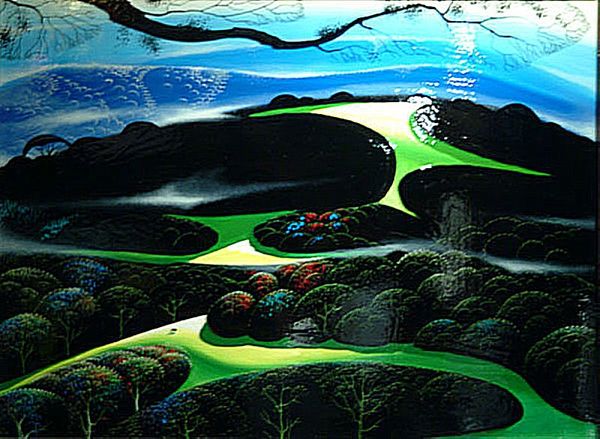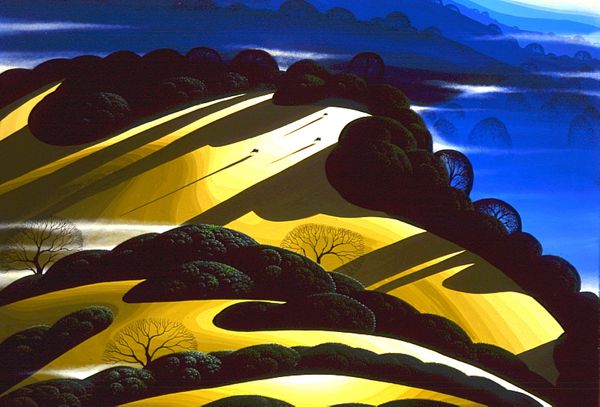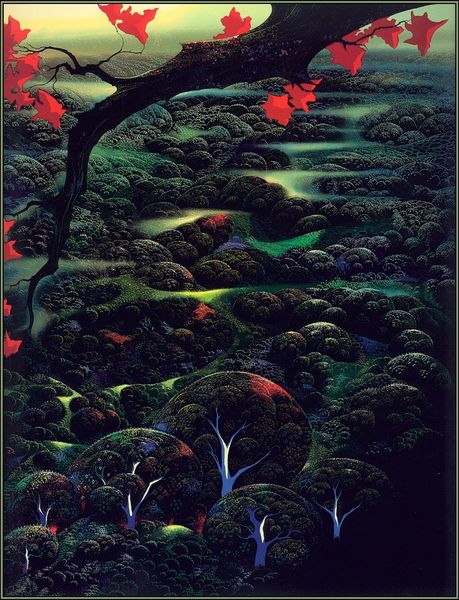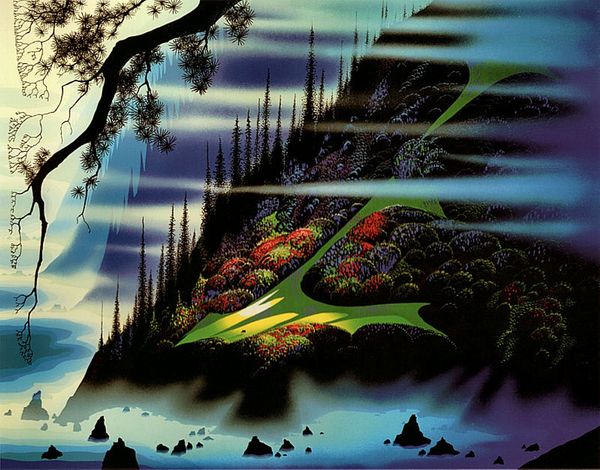
Copyright: Eyvind Earle,Fair Use
Editor: We're looking at Eyvind Earle's "A Summer Day" from 1997, a tempera and plein-air painting. The heavy impasto makes the rolling hills appear dreamlike and slightly ominous. What catches your eye in this piece? Curator: The painting operates through a sophisticated interplay of figure and ground. Note how the stylized tree in the upper register creates a dramatic contrast with the luminously rendered hills. Observe the formal arrangement of these hills: their curvilinear forms echo one another. Editor: So, you’re focusing on the shape relationships, then? I noticed the repeated curve motif as well. Curator: Precisely. The artist invites contemplation through such repetitions. The linear pathways and strategic placement of the nebulous fog further articulate a complex spatial arrangement. Do you agree? Editor: Yes, the fog acts like another compositional element. It breaks up the space in an interesting way, almost flattening it in areas. The lone animal feels significant somehow. Curator: It does. How might the painting's symbolism interplay with these structural qualities? The subject, an idealized landscape, functions almost as a tableau – an image intended for formal contemplation, don't you think? Editor: That’s a good point; it feels posed somehow, less about a real place, more about an idea of a place. I see your formalist reading now. Curator: Indeed. It highlights how a seemingly straightforward landscape is rendered through Earle's distinct, formally driven visual vocabulary. Editor: I’ll definitely pay more attention to formal relationships from now on.
Comments
No comments
Be the first to comment and join the conversation on the ultimate creative platform.
